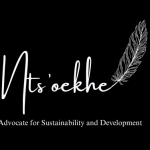
Dear Reader,
For decades, Lesotho has occupied a quiet yet essential place in the global fashion supply chain. In industrial zones across the country, thousands of workers—primarily women—have produced garments for global brands such as Levi’s, Jean Wears, Calvin Klein, and Walmart. These clothes, stitched in Lesotho’s factories to internationally accepted standards, are shipped abroad, rebranded, and then reintroduced into the local market as premium products.
Despite their origin, many Basotho consumers continue to attach higher value to imported labels, often overlooking local equivalents—even when the difference is only the name on the tag. This suggests the issue is not rooted in production capacity or quality, but rather in perception and psychological conditioning.
Lesotho has already demonstrated the technical ability to meet global expectations. The infrastructure exists. The workforce is skilled. The international demand is present. But domestically, the narrative still leans toward foreign validation. Garments made in Lesotho are rarely worn with pride unless first endorsed elsewhere.
This has resulted in a curious paradox: exporting quality while importing prestige. The transformation of a product’s perceived value lies not in its making but in its marketing—something Lesotho has yet to master at home. A Levi’s tag confers confidence; a local tag often does not. The problem, therefore, is not lack of production—it is lack of belief.
Recent developments in global trade highlight this internal contradiction. Earlier this month, Minister of Trade Mokhethi Shelile addressed the significant tariff disparity between Lesotho and the United States. While Lesotho imposes tariffs of up to 99% on U.S. imports, it faces a 50% tariff from the U.S.—the highest among countries affected by the new policy. This is in the context of a deeply lopsided trade relationship: Lesotho exports goods worth M4.7 billion to the U.S., but receives only M56 million in imports.
These heavy tariffs, while economically constraining, may serve an unintended but valuable purpose. They should be seen not only as penalties but also as necessary mind openers. They force a confrontation with the long-standing dependency on foreign markets and labels. They call into question why local consumers and producers continue to seek affirmation from outside, despite already meeting international standards.
Within the textile industry, the imbalance extends beyond trade. Only 40% of the work done in Lesotho’s factories is attributed to Basotho workers. The remaining 60%—which includes design, fabric sourcing, and value addition—belongs largely to external entities. Much of the industry’s USD 240 million in export value ultimately flows out of the country. One foreign firm reportedly shipped 40 containers daily, a telling indicator of who benefits most from Lesotho’s industrial output.
On the continental stage, the opportunity remains underutilized. WTO Director-General Ngozi Okonjo-Iweala recently pointed out that Africa spends $7 billion a year on textile imports, yet countries like Lesotho, which already produce these goods, are missing from the equation. Despite exporting over $1.14 billion in 2023—led by diamonds and garments—Lesotho has not fully tapped into African markets.
According to the Observatory of Economic Complexity (OEC), Lesotho’s exports have grown by $127 million since 2018. South Africa, Belgium, the United States, the UAE, and India are the top destinations. Still, the country’s presence in regional trade, particularly in textiles, remains muted.
This gap between potential and recognition is not a matter of policy alone. It is psychological. The inability to perceive local products as equal in value to imported ones reflects a deeper issue about identity, self-worth, and economic independence. Until this mindset shifts, Lesotho may continue to export craftsmanship and import confidence.
Tariffs may sting in the short term, but they expose a longer-standing discomfort with self-reliance. They are an invitation—not to retreat—but to reflect. Perhaps Lesotho’s most significant economic challenge is not what it lacks, but what it refuses to see in itself.






